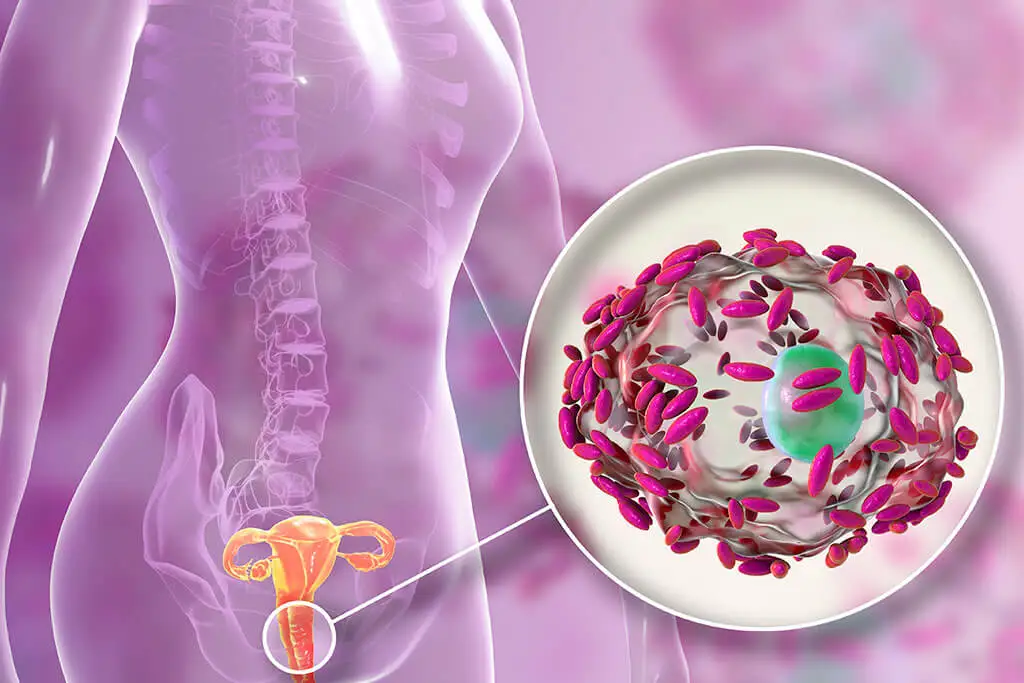Vaginal Steam Baths: Uses and Recommendations

For some time now, vaginal steam baths have been attracting the attention of thousands of women around the world, since many celebrities have promoted their practice. This treatment, also called vaginal steaming or ” yoni steam,” consists of exposing the vaginal area to the steam released by some herbs in order to cleanse and reduce some ailments. But does it really work? Is there evidence?
Although many anecdotal data report benefits, for now, there are no scientific studies that prove that vaginal steam baths are effective. Instead, health professionals warn that they may actually carry some risks, especially when performed at home and without the necessary precautions.
How do vaginal steam baths work?
To perform vaginal steam baths, an infusion is prepared with several herbs. Then, the vagina is exposed to the vapors released by the cooking for a period that can range from 20 to 45 minutes.
Some luxury spas offer this service for a considerable fee. For this, they use a special seat known as a “throne,” which has a hole through which the steam comes out.
However, some people do this at home without special elements. The preparation is simply placed in a basin, after which the woman crouches unclothed over the basin to receive the vapors. Often, a towel is used around the waist and legs so that the steam doesn’t escape.
In general, the herbs used are the following:
- Chamomile
- Calendula
- Basil
- Mugwort
- Oregano
- Wormwood
- rosemary

We think you may also enjoy reading this article: 23 Types and Shapes of Vagina: All of Them Are Normal
The uses and benefits of vaginal steam baths
In traditional medicine, vaginal steam baths are used as a treatment to “cleanse” the vagina, uterus, and the entire reproductive tract of women. With this, its advocates say, it’s possible to diminish some common female problems, such as the following:
- Menstrual symptoms: cramps, inflammation, heavy bleeding, and exhaustion
- Hormonal imbalances
- Bad vaginal odors
- Infertility
- Hemorrhoids
- Stress
- Infections
- Headaches
Now, it’s paramount to consider that these alleged benefits have no scientific basis. Some say that it works because it improves blood flow to the vaginal tissues, which could stimulate healing. However, these claims have not been proven by science.
Although vaginal steam baths have always existed, the truth is that their popularity is quite recent. They made global headlines in 2015 after their promotion by celebrity Gwyneth Paltrow. Since then, they’ve become a practice offered by some spas and spas in Anglo-Western nations.
For example, UK-based alternative therapist Claire Stone has been offering vaginal steaming therapies for nearly a decade. Social media has helped promote the practice due to the supposedly positive feedback from those who have undergone it. Despite the latter, baths of this type may have more disadvantages than benefits.
So what do the studies say?
No quality research has been done to evaluate the alleged benefits of vaginal steaming. Their popularity is due to online testimonials and claims in popular literature that, of course, have no scientific basis.
A paper published in Culture, Health & Sexuality in 2017 suggests that these types of practices arise from harmful ideas such as that women’s bodies are dirty, that contemporary life is harmful, and that it’s necessary to be in constant improvement to maintain health.
However, the truth is that there are many myths surrounding female intimate health. Contrary to what many people think, the vagina does not require specific products or treatments to cleanse itself. As researchers explain in Women’s Health, the vagina cleans itself due to the presence of a microbiome composed mostly of Lactobacillus.
This group of bacteria produces lactic acid and other substances that regulate the pH of the area to prevent the growth of pathogenic microorganisms. In this way, they prevent infections and dermatological alterations, among other problems.
Therefore, it’s not necessary to use soaps, vapors, talcum powder, baths, or any chemical product for feminine hygiene. Research published in Epidemiologic Reviews warns that practices such as vaginal baths are, in fact, harmful. In reality, their regular use is associated with disorders such as pelvic inflammatory disease.
That said, one thing should be clear: it’s not necessary to wash or “purify” the inside of the vagina. The vagina has its own cleansing mechanism. For washing the external part, the use of water should be sufficient. If soap is used, it should be pH neutral and free of perfumes and irritants.
Can vaginal steam baths be dangerous?
There’s not enough scientific evidence to determine whether the application of vaginal steam is safe and effective. Still, there’s some concern regarding the risks of burns from exposure to these heat-sensitive tissues.
A case report published in the Journal of Obstetrics and Gynaecology Canada in 2019 warned about this problem. Researchers presented the case of a 62-year-old woman who suffered second-degree burns after applying vaginal steam in an attempt to reduce a prolapse in the area.
In turn, it’s believed that overheating of the intimate region can foster an ideal environment for the growth of infection-causing microorganisms. This is made worse if the elements used are not properly sanitized.
For safety reasons, its use is not recommended in cases of reproductive tract diseases, infections, and pregnancy. In all these conditions, it’s best to consult a doctor.

Like this article? You may also like to read: Four Homemade Remedies to Balance Your Vaginal pH
What to remember about this treatment
Although vaginal steam baths are sold with the aim of improving intimate health, the truth is that they’re unnecessary and can be dangerous. Under normal conditions, the vagina has the ability to self-cleanse naturally, due to its microbiome. If something alters its pH balance, the gynecologist can prescribe a treatment to restore it.
A paper published in Review of Anti-infective Therapy in 2021 warned about how the vaginal products and services industry manipulates reality to create dependency. They do this by instituting fads and constructing ideas regarding vaginal cleansing. Researchers warn that in the U.S. alone, more than two billion dollars are spent annually on douches, deodorant sprays, soaps, wipes, and powders.
However, if this type of intervention is used, it’s essential not to get too close to the steam to prevent burns. The environment in which it’s performed must be hygienic, as well as the elements used. Otherwise, there’s a high risk of infection.
All cited sources were thoroughly reviewed by our team to ensure their quality, reliability, currency, and validity. The bibliography of this article was considered reliable and of academic or scientific accuracy.
- Chen Y, Bruning E, Rubino J, Eder SE. Role of female intimate hygiene in vulvovaginal health: Global hygiene practices and product usage. Womens Health (Lond). 2017;13(3):58-67. doi:10.1177/1745505717731011
- Jenkins, A., Money, D., & O’Doherty, K. C. Is the vaginal cleansing product industry causing harm to women?. Expert Review of Anti-infective Therapy. 2021; 19(3): 267-269.
- Martino JL, Vermund SH. Vaginal douching: evidence for risks or benefits to women’s health. Epidemiol Rev. 2002;24(2):109-124. doi:10.1093/epirev/mxf004
- Robert M. Second-Degree Burn Sustained After Vaginal Steaming. J Obstet Gynaecol Can. 2019 Jun;41(6):838-839.
- Vandenburg T, Braun V. ‘Basically, it’s sorcery for your vagina’: unpacking Western representations of vaginal steaming. Cult Health Sex. 2017 Apr;19(4):470-485.
This text is provided for informational purposes only and does not replace consultation with a professional. If in doubt, consult your specialist.








